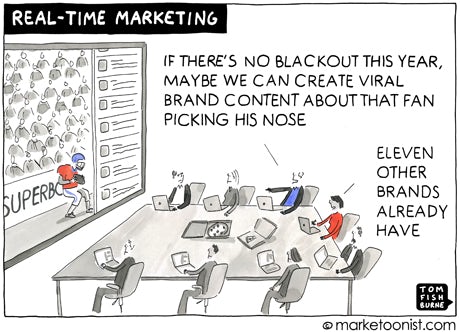Training people in data capture and use
As brands invest in tools to process huge amounts of data quickly, in-house training is seen as the best way to teach marketers to retrieve and interpret that information

“It would be easy to send people on a course but we believe that 70 per cent of people’s learning comes ‘on the job’,” says Rachel Bristow, communications planning director at Unilever. The company is not alone in its belief.
As data grows in importance within a marketer’s armoury, brands often find that the best way to ensure their marketing team capitalises on the wealth of facts and figures at their fingertips is to incorporate training into their everyday work. “It’s all about living your brand through immersion,” says Lorna Kimberley, head of marketing for Mizkan Europe, owner of Branston Pickle among other brands. But who is best qualified to deliver on-the-job training in data application and what are the golden rules for imparting the required knowledge to those historically more inclined towards creativity than analytics?
Easy access
The first step is ensuring that the data is easily accessible. “It is crucial to frame the data in a way that helps people to make better decisions and do their day job,” says Bristow. Unilever recently invested in a platform that can process “vast volumes” of data and Bristow says speed is the watchword as the company’s marketers now have access to a lot of data sources in one place – information that formerly would have been held in several different locations.
“The important thing is that we are making it very simple: ‘Press here, click there.’ The type of data a marketer would need to make decisions every day is now accessible in seconds.” She cites information on brand equity, competitor media spend and investment decisions as examples of the data that Unilever’s team is now able to access quickly. “We are able to understand and see the performance of a brand more quickly, which allows us to make more informed decisions,” she says.
The type of data a marketer would need to make decisions every day is now accessible in seconds
Visualisation is also key to keeping data simple, Bristow adds. Her view is supported by Fiona Cochran, marketing and sales operations director at independent wine merchant Bibendum.
Three years ago, the company’s market insights team built a bespoke tool, Prospect, which pulls market data from different sources into one portal. This includes Bibendum sales data, information from multiple retailers and data from the company’s consumer survey platform, TasteTest.co.uk. By pooling this data, Bibendum’s marketers can obtain a clear picture of the UK wine trade, down to postcode level.
“Prospect was designed to be completely visual,” says Cochran. “The market insights team can see the hard data, but the marketing team sees a very user-friendly portal that is colour coded and uses graphs, maps and tables to present the information. It is not a spreadsheet.”
Ensuring relevance of data
With ever-increasing sources of data, it is important that marketers see only the information required to make their job easier. “You have to show relevance,” says Bristow. “You can have tonnes of data that you can visualise and make look fantastic but if it isn’t the data that people need to help them make everyday decisions, it is just a nice-to-have.”

Key to knowing which data is relevant to which role is an intimate understanding of the company as a whole, hence the trend for brands to exploit in-house knowledge to inform staff training. At Match.com, training is a mixture of one-on-one sessions and day-to-day job support, usually carried out by senior members of the marketing and product teams. “Ultimately, staff within a company are best placed to train new starters about how to use data as they understand how it relates to the business,” says Jeremy Corenbloom, marketing director at Match.com.
At Bibendum, the market insight team that built the new data platform is acknowledged as best placed to train the wider marketing team to use the tool, with that knowledge subsequently filtered through the company. “Our marketing team trained the sales team, so there was a transition from market insight to marketing and from customer marketing to sales,” says Cochran.
This in-house strategy also enables brands to tailor training to individuals’ skills. Mizkan’s Kimberley says the company, which also owns Sarson’s Vinegar, takes a personal approach to training its marketing team.
“It is about recognising that each of my three brand managers has a different skillset and way of working,” she says. “I know that my Sarson’s brand manager knows the data and functional side but I am training him to put his data across in a more creative way. For some of the other members, I say: ‘OK, you’ve sold me the vision. Now show me the data that shows how you got to that vision.’” Persuading busy marketers to learn something new can demand other tricks too. Cochran says that when Bibendum launched its Prospect tool, her most important task was bringing the data to life by illustrating how it was helping the company’s customers.
Staff within the company are best placed to train new starters on using data as they understand how it relates to the business
“I was really keen to get case studies together, with customers talking about how the data had shaped their business thinking and prompted them to think about their wine lists, pricing and ranging. Feedback was really positive so that gave the training momentum.”
Unilever knows the importance of feedback to training programmes. It is running a year-long business change scheme alongside its new platform. This includes global marketing forums and the creation of ‘champions’ whose skills filter through to other marketers. Bristow says: “If lots of people are saying that things don’t work, we will change them. We have already done a lot of focus groups around the world because different things work for different cultures and categories. So we have been tweaking lots of training programmes.”
The appliance of science
In addition to knowing which data they need, marketers must be able to retrieve and apply it in a useful way. At Bibendum, the on-the-job training concludes with 20 questions. “We task people with things such as finding out the favourite country of origin for wine in Birmingham, so they go in and do that using the data,” says Cochran. “Then they can ask why they didn’t get it quite right, for example, and we can explain.”

At Mizkan, Kimberley publishes a ‘Fact of the week’ that is intended to stick in brand managers’ minds. “In team meetings, I also get teams to present the top 10 facts about their brand that month, so I’m training them to understand their category and how their brand plays within it. I then ask them to cut it down to three killer facts because there is so much data. You have to drill down.”
Clearly, good training is producing results. Corenbloom says Match.com’s analytic tools enabled its marketing team to spot a new opportunity last year. “We discovered that consumers wanted to meet other singles in a relaxed and informal setting, so we decided to set up ‘Match.com nights’ to give them the opportunity to do that. The role of data in launching this service was really important, both in terms of positioning it as part of our core brand and communicating it to members.”
For Bibendum, the Prospect platform gives it a clear competitive edge. “It is now part of every new business tender,” says Cochran, adding that the company has recently won business with Carluccio’s and Compass Catering.
“We can look at [Compass’s] different sites – for example, Lords versus Cheltenham – and work with them on ranging and different processes. [Prospect] has quickly become one of the things we are known for in the trade.”
Q&A
Alex Owens
Head of insight
Sainsbury’s
With its partner, Nectar-owner Aimia, Sainsbury’s is focused on providing desktop decision-making tools for its colleagues in the commercial (trading and marketing) team
Marketing Week (MW): How does Sainsbury’s desktop tool, Self-Serve, help your team?
Alex Owens (AO): It gives them access to our wealth of Nectar data. The tool is very user-centric and enables people across the organisation to get a better and deeper understanding of customer behaviour. It ensures that, as a business, we truly understand the customer, and that will ultimately lead to us being better able to meet customer needs.
MW: How are marketers trained to use the tool?
AO: Our training is specifically related to people’s jobs and their key performance indicators (KPIs). I have found that if you do broad-brush training in any desktop tool, people might not need to use it for six months and by the time they do they have forgotten how.
Also, if you do not make it relevant to their KPIs, you are not incentivising them to use the tool and therefore people carry on as normal. You have to show them the benefits of the tool to their day job, and to do that you must ensure the training is specific or bespoke to a particular function within a particular division.
MW: Is your training carried out in-house?
AO: Yes. We get range planners together and deliver a session so that they understand how best to use that data to inform their decisions.
MW: What are your tips for data-use training?
AO: You have to educate people on the benefits of data, helping them to understand what data you have, why each source is useful and which decisions they can best inform.
Viewpoint
Sandra Fazackerley,
Head of Business Intelligence Reporting
O2
Insight derived from data is a key foundation in the Telefónica UK strategy. We pride ourselves on being a customer-focused organisation and data exploitation plays a big part in our drive to better understand what our customers need in the dynamic digital world in which we operate.
The importance of data to Telefónica UK is reflected in a number of ways, not least the commitment to invest in our Business Intelligence capability, including investment in our people, processes and technology.
On the people front, we have consolidated a range of data specialists whom we already had and brought new people into a centralised team of experts that service the needs of the entire organisation.
Consequently, our specialists cover a wide range of data-related capabilities from data management and strategy to research, analytics and CRM.
There are unique training and development needs for such a diverse range of specialists. Focus is given to both technical skills and behavioural or leadership capabilities to achieve the skillsets we think are necessary.
Training ranges from formal external courses to internal training in areas such as presenting, coaching and mentoring.
The use of seminars, workshops and online webinars is encouraged to further develop technical and business skills.
Best-practice sharing within our global organisation and sharing with external agencies and companies are just two of the other channels that we try to utilise to develop our teams. These specialists are then conduits for driving data insights back into our commercial business areas.
Our biggest challenges are primarily around complexity and diversity in a massively dynamic environment. For example, the introduction of new technologies and approaches is changing the breadth of skills needed in analytics and social media management.
Through technical training we have introduced new skills and techniques across a number of areas. For example, training has allowed us to bring new and improved skills, such as ‘dashboarding’, data mining and new modelling techniques, into the organisation.
The latter are widely used across our campaigns and in multiple channels, driving more targeted communications and next-best offer recommendations.
In the past year, we have also used a wider cross-section of skills across the Business Intelligence area to internally build and develop our strategic consumer and business segmentations more quickly, and much more cheaply, than previous initiatives.






